Over the past few years, smaller electric vehicles, such as e-bikes and e-scooters have become more popular. With the advance in battery technology, these small vehicle have become quite convenient for short commutes. As I started attending University, the utlility of such a vehicle grew on me, but I didn't like how bulky and heavy e-bikes and e-scooters. As an alternative, I decided to build an electric longboard. To me, a longboard would be much easier to carry around on campus or in the bus, while still providing acceptable mobility.
First, I did some research to familize myself with the parts of an electric longboard. This was also my introduction to skateboarding in general, so I had a lot to learn.
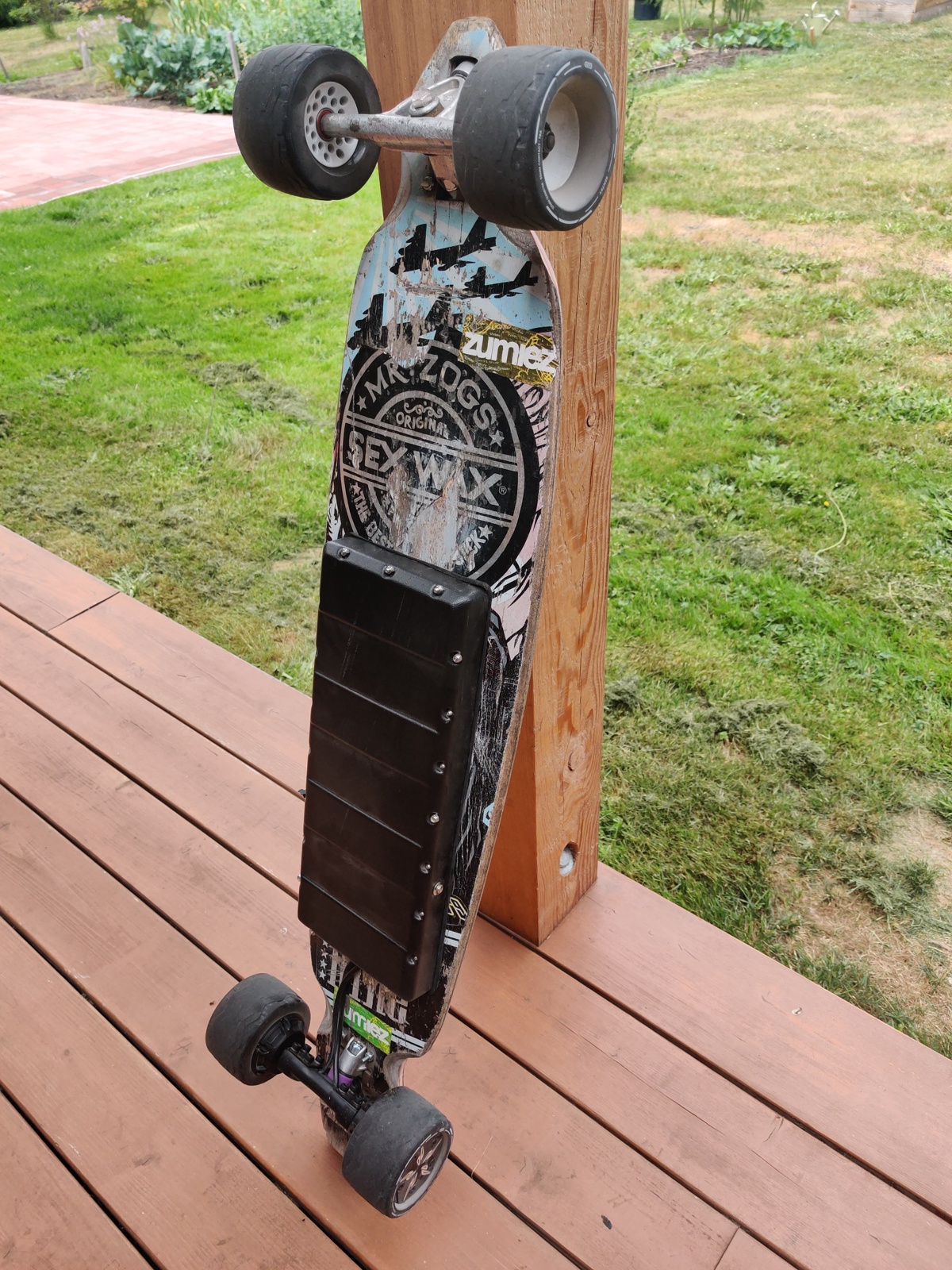
Complete build
Deck and Trucks
The deck and trucks are parts of a regular longboard. The deck is the part you stand on, and to what the electronics will be attached to later. The trucks are the metal pieces between the deck and the weels and they allow the skateboard to turn by leaning to one side or another. The project started with an old longboard that probably spent too much time in the rain and was in pretty bad condition, but I still tried salvaging the deck and trucks.
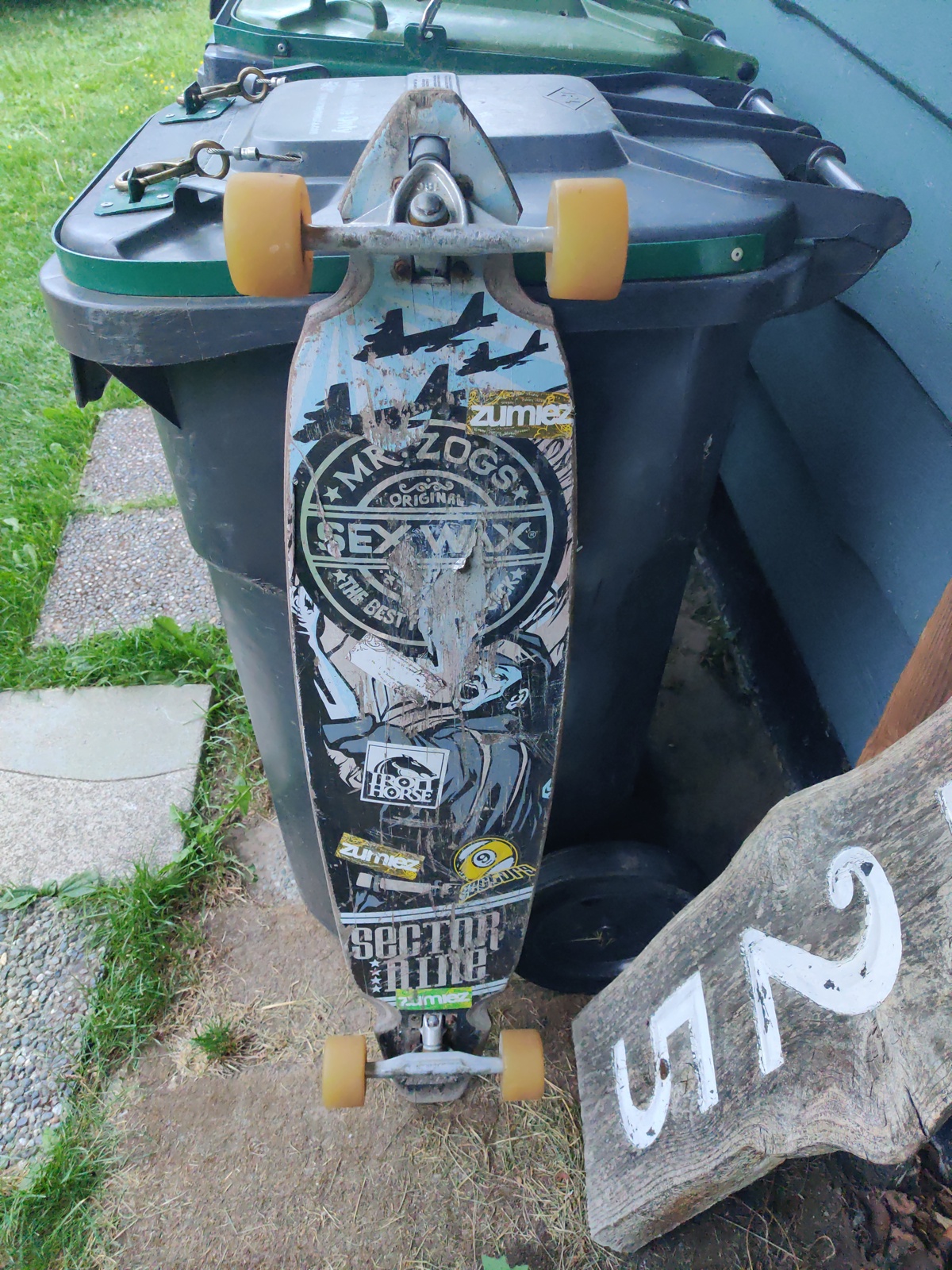
Original beat-up longboard
Battery
Like any other electric vehicle, e-skate batteries are made of many lithium ion cells connected in series or parallel. Selecting a battery is deciding on a how many cells are connected in series vs parallel. More series-connected cells will give you more capacity and more range, while more parallel-connected cells will give higher voltage and give more power to the motors. I decided to settle on a 10s2p battery configuration, which translates to 10 cells in series and 2 in parallel for a total of 20 cells. Using Molicel P42A cells, that adds up to 8.4 Ah of capacity and 42 V when fully charged. This is a rather common configuration that provides over 20km of range and enough power to go up a decent hill.
Motors
The motor is the electromechanical device that converts the energy stored in the battery to kinetic energy to propel the longboard. E-skate motors come in two different categories: hub motors and belt-drive motors.
Choosing between hub-style motors and belt-drive motors will decide a lot about the build. Hub motors are built into each of the rear wheels of the longboard, while belt-driven boards have two external motors driving each wheel with a belt or chain. Belt-driven motors can be bigger and more powerful, at the expense of more complexity and moving parts to deal with. They also offer more customizability to change wheels without replacing your motors. Hub motors are less powerful, but sleeker because they don't have any external parts.
I chose hub motors because I preferred the look and simplicity. As a commuter board, I didn't need anything crazy powerful either. Since there wheels are so much bigger than the original wheels, I had to cut out some of the deck to make them fit.
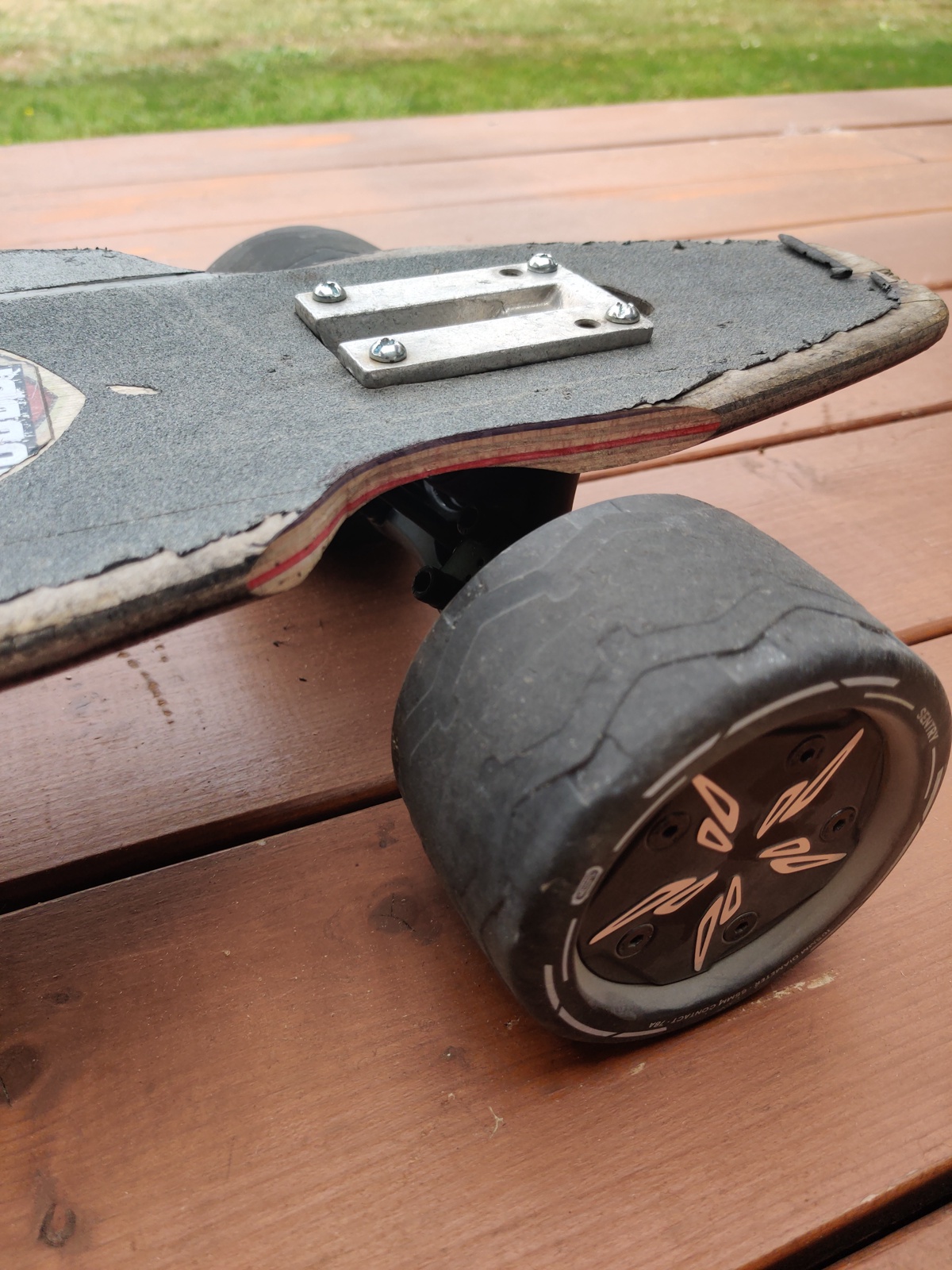
Rear hub motor wheels installed on modified deck
Electronic Speed Controller (ESC)
The ESC is what converts simple "speed up" and "slow down" instructions to directly controls the motors. When choosing an ESC, there are two main groups: dumb ESCs and and programmable VESCs.
Dumb receivers are cheaper, but are like black boxes and you cannot change any settings. You are relying on the manufacturer to have selected good acceleration and brake speed values for you. VESCs on the other hand are an open source project that allow you to change many parameters to change how the ESC will behave. This can lead to more versatility and a smoother ride, albeit at a slightly higher cost.
I chose to buy the Maker-X Go-FOC DV4s, which was a newly released budget-friendly VESC. Like most e-skate ESCs, it is actually two ESCs, one for each motor, built into one package.
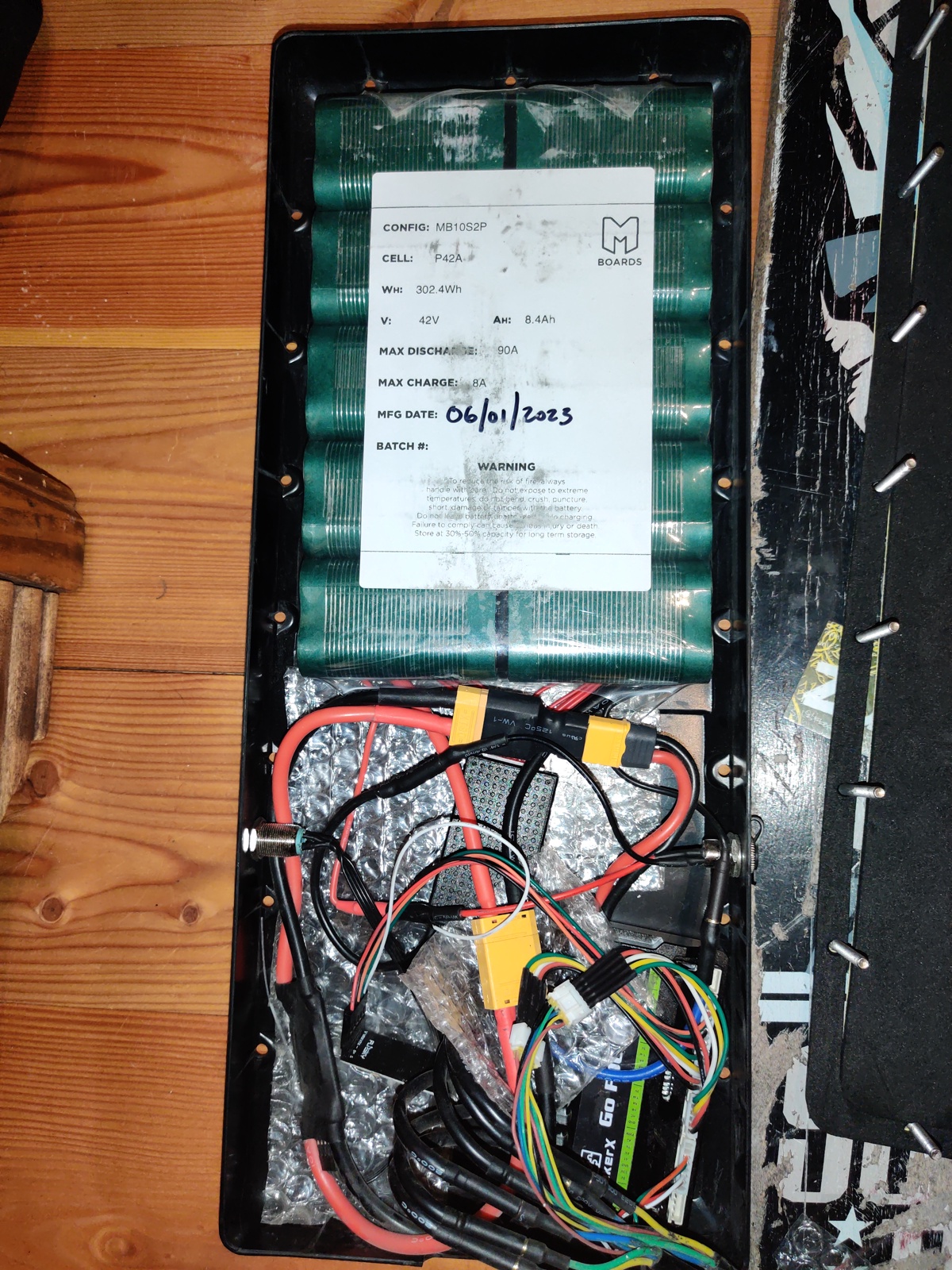
Battery (top) and ESC among jungle of wires (bottom) installed in a plastic enclosure
Upgrades
The parts above worked great for a few months, until the deck failed. I ended up getting a new deck and strapping a rear bike light to be visible in the dark.
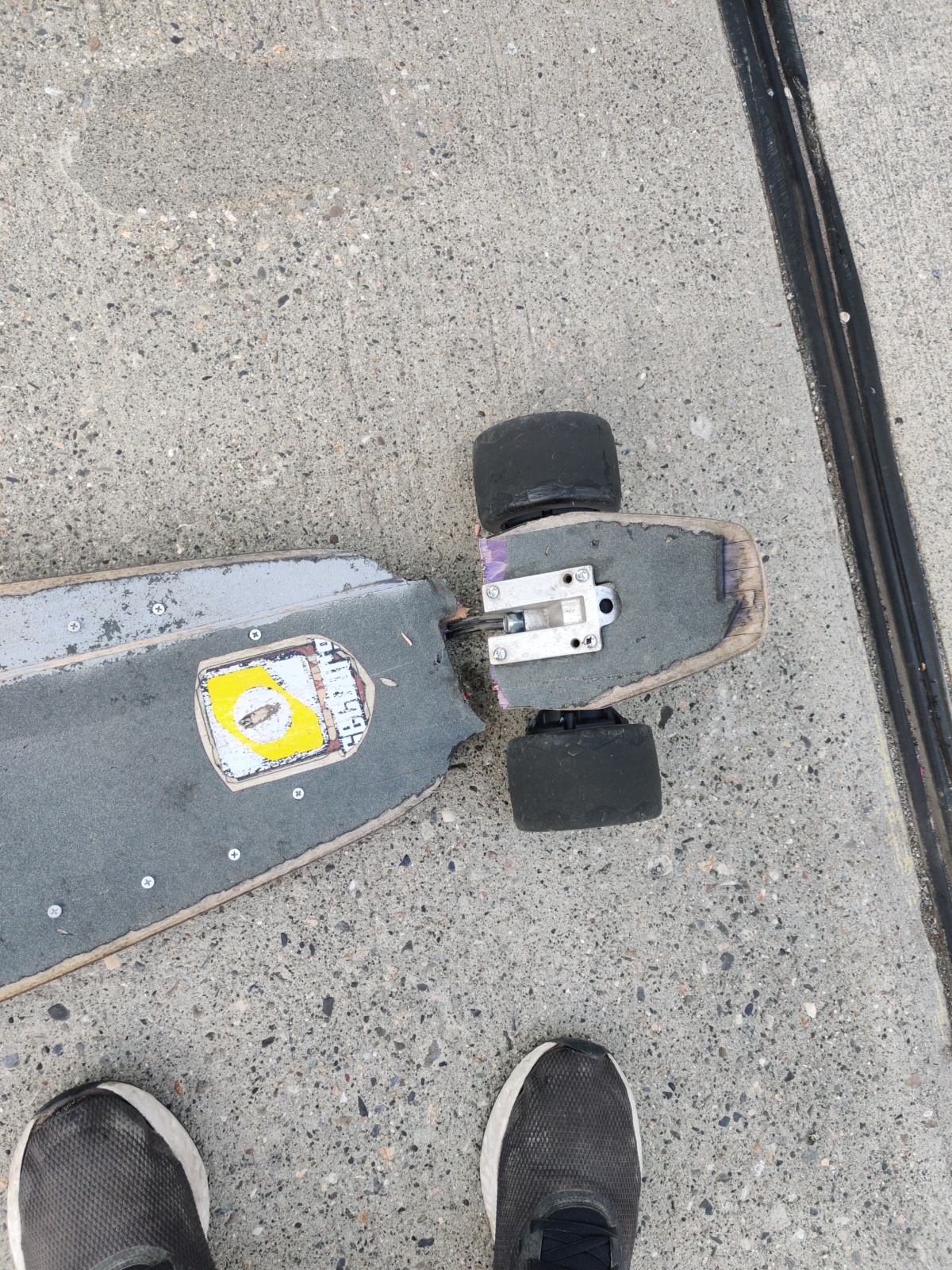
Snapped deck after riding over a concrete lip
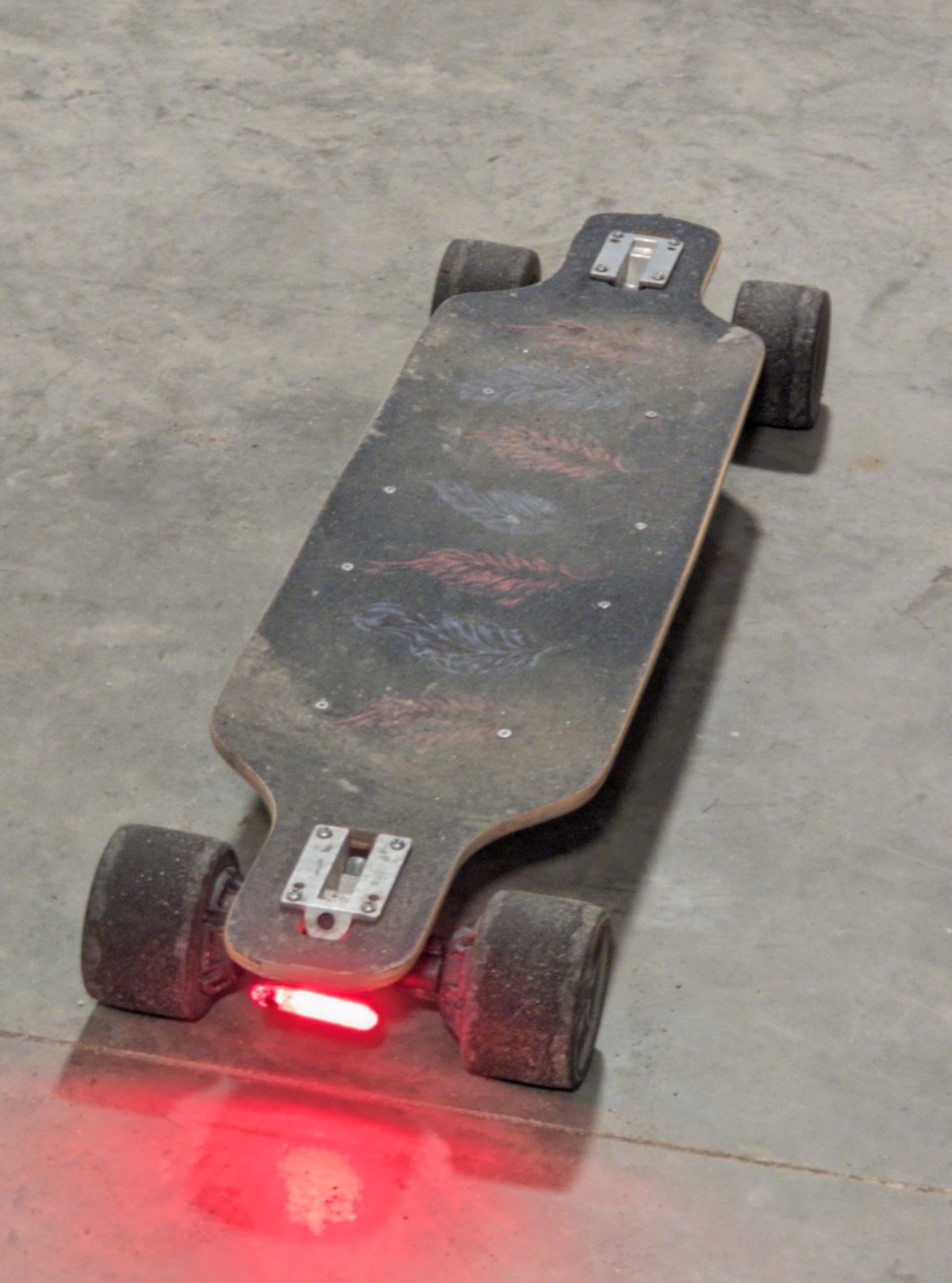
New deck with rear light